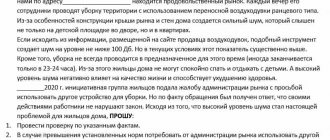State Duma deputies propose to adopt amendments to the legislation that would abolish punishment for individual cases of displaying swastikas and similar Nazi symbols.
Article on the topic Swastika as the norm. The Ukrainian army in Donbass raised the flag of the Third Reich
The ban on the use and display of Nazi symbols in any form was established by the federal law of May 19, 1995 “On the perpetuation of the Victory of the Soviet people in the Great Patriotic War of 1941-1945.” In the Federal Law on Combating Extremist Activities adopted in 2002, this wording is slightly softened: only “propaganda and public display of Nazi paraphernalia” is recognized as an offense.
According to Part 1 of Art. 20.3 of the Administrative Code for propaganda or public display of Nazi paraphernalia or symbols, citizens face a fine of one thousand to two thousand rubles or arrest for up to 15 days, in addition - confiscation of the subject of the administrative offense. For officials and legal entities, only a fine with confiscation of the subject of the offense is provided: for the former - from one thousand to four thousand rubles, for the latter - from ten thousand to fifty thousand rubles.
“There is still legal uncertainty with the display of swastikas, since different departments have their own interpretation of the concepts contained in the law “propaganda and public display of Nazi symbols,” says lawyer Sergei Kormilitsin. – For example, the law “On Countering Extremism” (Article 1) talks about “propaganda and public demonstration.” At the same time, the Code of Administrative Offenses contains the concept of “propaganda OR public demonstration.”
Symbols of discord. How a Perm woodcarver became a “Nazi” Read more
In what cases is the use of symbols punishable and in what cases is it not?
According to Kormilitsin, Roskomnadzor, when considering such cases, is guided by the linguistic examination of the law “On Combating Extremism.” “In it, experts concluded that punishment is possible only with a combination of propaganda and public demonstration. That is, one could conclude that the demonstration itself (for example, in a historical film) is not a violation, but in combination with propaganda it is already such,” explains the lawyer.
Related news
Over 70% of Russians have a negative attitude towards the swastika
Roskomnadzor clarified its position regarding what should not be considered a public display of Nazi symbols in April 2015. According to the department, public display of swastikas and other Nazi paraphernalia or symbols is not a manifestation of extremism if it does not serve propaganda purposes. The use of such symbols for historical and scientific purposes is considered acceptable.
Previously, the Constitutional Court determined that a sign of extremism is the display of swastikas and Nazi symbols, which explicitly or covertly contradicts “the constitutional prohibitions of inciting hatred and enmity, inciting hatred and propaganda of social, racial, national, religious or linguistic superiority.” The presence of a contradiction must be determined in each specific case depending on the form and content of the information, its addressees, goals, socio-political context, the presence of a real threat (for example, if there is a call for an attack on constitutionally protected values).
In January 2021, the Supreme Court of the Russian Federation stated that “the conclusion that the circulation of Nazi paraphernalia and symbols is not aimed at their propaganda can only be made if it is committed for purposes unrelated to it, including, in particular, scientific research, artistic creativity, preparation of materials condemning Nazism or presenting historical events.” This decision was made in the case of Muscovite Oleg Vorontsov - the court declared illegal his attempt to sell the Third Reich military badge “For Wounding” over the Internet without covering the swastika depicted on it.”
Article on the topic
Toys with swastikas. Doll Nazis are being removed from Russian stores
The deputy explained who will be punished for photos of Hitler on social networks
The State Duma explained who will be punished for publicly posting photographs of Nazi criminals, in particular, the fascist dictator Adolf Hitler. The ban applies to social networks, films, performances, T-shirts, etc.
Co-author of the relevant bill, Chairman of the State Duma Committee on Culture Elena Yampolskaya, in a conversation with NSN, explained in what cases publications by Nazi criminals on social networks are considered a violation of the law.
According to her, controversial cases will be resolved in court based on the results of the examination. In most cases, such offenses are clearly open in nature, with intent.
“Publication of photographs of Hitler, which clearly indicate approval of his activities and approval of the ideology of Nazism, is prohibited. I can hardly imagine a situation in which some absolutely neutral user of a social network just like that, out of the blue, suddenly posts a photo of Hitler. Any publication occurs in some context. The same goes for advertising on the Internet. For example, last week I came across an advertisement “Bust of Goering. Status gift." I want to understand, is this the “idiot” status, or what? For whom is the “Goering bust” a status gift? Here, of course, there is something to talk about. The court will determine the line, and the court in such cases always orders an examination,”
- she explained.
Yampolskaya admitted that violators could be convicted even for posting “neutral” photographs of Hitler on social networks, without any texts or comments. A similar rule applies to T-shirts with Nazi images. Such manifestations are propaganda of Nazism and cannot go unnoticed, the legislator emphasized.
“I can hardly imagine a situation where you woke up in the morning and you madly wanted to post a photo of Hitler on Instagram for no reason. Naturally, when a person wears a T-shirt and has a portrait of Hitler on his chest, if law enforcement agencies are interested in this, and in such cases the court will always order an examination, then I think the experts will most likely decide that such behavior, of course, is is an approval of Hitler’s activities, and here one can see the propaganda of Nazism”
, noted Yampolskaya.
The deputy also warned that the law applies to films, performances, and any other creative work. Law enforcement officers will check materials that contain extremism with Nazi symbols, sayings, etc. Any person who notices a violation of the law can become a plaintiff.
“The norm is written very clearly. If there is no propaganda, then there is no crime and no punishment. This fully applies to feature films. If it’s [a film or a play – approx. ed.] will look strange, a person has the right to contact law enforcement agencies and ask to check this or that work for this article of the law, and in this case an examination will be required.”
, - she said.
According to Yampolskaya, the new provisions of the law will make it possible to avoid incidents such as fines for the swastika on Stirlitz’s sleeve, when TV channels were forced to blur such footage. The answer will be given by the examination.
“To avoid such unpleasant things, in cases where there are no signs of approval of Nazi symbols and Nazi propaganda, its use was permitted. I have introduced exactly the same norm into the “Law on the Perpetuation of the Victory of the Soviet People in the Great Patriotic War” in connection with images of Nazi criminals. If there is no sign of approval, if it is a historical publication, textbook, magazine or newspaper, if the context in which the image is published does not convey propaganda, there is no reason to say that it should be prohibited,”
- she explained.
The parliamentarian recalled that these offenses are subject to administrative, not criminal, liability.
On July 1, Russian President Vladimir Putin also signed a law prohibiting the identification of the roles of the USSR and Nazi Germany in World War II.
What is prohibited in practice?
According to data from the Judicial Department of the Supreme Court of the Russian Federation, cited by TASS, in recent years the number of Russians prosecuted for displaying Nazi symbols has increased significantly. In 2008, according to Art. 20.3 of the Administrative Code, 54 people were involved, in 2013 - 256, in 2015 - 1183, in 2021 - 1639.
According to Kormilitsin, “depending on the interpretation of one or another department of the concept of “propaganda and public display of Nazi symbols,” situations discussed in society may arise when cases were initiated due to the sale of WWII soldiers in the Children’s World or punishment for liking a frame with a swastika from some movie."
Indeed, some cases of prosecution under Part 1 of Article 20.3 of the Code of Administrative Offenses have become resonant. In January 2021, the Isakogorsky District Court of Arkhangelsk fined local resident Mikhail Listov one thousand rubles for posting a photograph of the 1945 Victory Parade on the VKontakte social network. It was a world-famous photograph by TASS photojournalist Evgeniy Khaldei, which captured Soviet soldiers with lowered banners and standards of Nazi Germany at the foot of the Mausoleum. A month later, the higher Arkhangelsk Regional Court overturned this decision, recognizing that the photograph represents historical memory and not Nazi propaganda.
Article on the topic
"Great person". How a Ukrainian teacher congratulated Hitler
Also widely discussed in the press was the appointment by the Leninsky District Court of Stavropol of administrative arrest to a student who reposted recordings with photographs from the Museum of the Second World War in Poland.
In December 2021, a group of parliamentarians led by Deputy Chairman of the State Duma Pyotr Tolstoy and the chairmen of the Committee on Culture Elena Yampolskaya and the Committee on Security and Anti-Corruption Vasily Piskarev introduced two bills that should clarify the norms of the laws “On the perpetuation of the Victory of the Soviet people in the Great Patriotic War of 1941 -1945" and "On countering extremist activities", as well as Art. 20.3 Code of Administrative Offenses of the Russian Federation. The authors of the initiative stated that current legislation makes it possible to ban the screening of all films, including military chronicles, as well as books, paintings, photographs and teaching aids in which Nazi symbols are used in the context of the Great Patriotic War. Theoretically, the films “Ordinary Fascism”, “Seventeen Moments of Spring” and many others could be banned.
Stirlitz with a deuce on his sleeve. New destructive law?
On July 1, Russian President Vladimir Putin signed a law that prohibits the display of images of Nazi criminals, their accomplices, attributes and symbols for the purpose of promoting extremist activities. Alas, both lawyers and the patriotic public have questions about the text of this law: it can be interpreted in such a way that all history textbooks will have to be republished and all films about the war will have to be remade.
The other day in Kyiv, an SS man who has survived to this day was buried by the presidential regiment. The highest military honors were given to the traitor, because Ukraine now considers his betrayal a feat. Torchlight processions and parades of “veterans” – former SS soldiers – take place along the streets of cities in Ukraine and the Baltic republics. Now they are called heroes there because they fought against the Russians. In the Czech Republic, in Prague, a monument to Konev was demolished - the Czechs do not want to remember who liberated them from fascism, they prefer to think that the Russians occupied and oppressed them after the war. They are “fighting” monuments to Russian soldiers in Poland. As for our Western partners, once allies in World War II, in England, the USA, and now in France you can hardly find a young person who even remembers that it was the Russians who defeated Hitler, and what’s more, that they at least helped defeat him. The rejection of historical memory is part of the “mental war” that the West is waging against Russia and Russians.
And the West, alas, is making progress. Last year, criminals tried to post photos of Nazi criminals on the Immortal Regiment website instead of photos of unforgettable war heroes.
In Russia they understand that allowing “the perpetuation of the Victory of the Soviet people in the Great Patriotic War of 1941–1945” prohibits identifying the roles of the USSR and Germany in World War II. All statements like “The USSR was the aggressor” are now prohibited, and this is absolutely correct. But if according to the first law there are no questions and no one except Russophobes can have any questions, then with the second law, amending both the law “On perpetuating the Victory of the Soviet people...” and the law “On countering extremist activities” (No. 280-FZ), alas, everything is far from so simple.
Will you have to change all the textbooks?
The main novelty is the ban on displaying images of Nazi leaders, displaying symbols and paraphernalia.
In the Russian Federation, the use, including public display, of Nazi paraphernalia or symbols or paraphernalia or symbols that are confusingly similar to Nazi paraphernalia or symbols, as well as extremist materials of images of leaders of groups, organizations or movements recognized as criminal in accordance with the sentence, is prohibited. International Military Tribunal...
The law also introduces exceptions, according to which the display of images of leaders, paraphernalia and symbols is permitted. Requirements of the articles of the law in the new edition:
... do not apply to cases of use of paraphernalia, symbols or images of leaders of groups, organizations or movements named in these parts, in which a negative attitude towards the ideology of Nazism is formed or there are no signs of propaganda or justification of Nazism.
Unfortunately, this norm is not entirely clear. Let's ask in simple words: can enemy soldiers and officers in recognizable Nazi uniforms now appear in a war film? Is it a curiosity to consider the painted-over swastika on the sleeve of Otto von Stierlitz’s uniform in the famous film - or is it a literal and exact execution of the law? What to do with portraits of enemy leaders in history textbooks? Or this: should a lecture on the crimes of Nazism be considered an exception to the prohibitive norm?
It would seem that the answers to these questions are intuitive. But the law does not provide examples of what can be considered a justifiable demonstration and what is not. Although everyone understands that there is a difference between a lecture about the crimes of Nazism and a meeting of neo-Nazis reciting quotes from the leaders of Nazism.
The new law also amends Article 1 of the Federal Law “On Combating Extremist Activities.” It contains a list of what is considered extremist materials.
Extremist materials - documents or information on other media intended for distribution or public display, calling for the implementation of extremist activities or substantiating or justifying the need for such activities, including the works of the leaders of the National Socialist Party of Germany, the Fascist Party of Italy, speeches, images of group leaders , organizations or movements declared criminal in accordance with the verdict of the International Military Tribunal...
It is clear that this norm outlaws, for example, leaflets by modern extremists with quotes from Nazi leaders. And this is absolutely correct. It is illegal to distribute on the Internet in extremist groups excerpts from the works of the Nazis and any form of justification for the crimes they committed.
But there are also questions about this norm. Wouldn't a school or university textbook that contains quotes from their own speeches denouncing the Nazis fall under its scope? After all, these quotes formed the basis of many sentences passed by the Nuremberg Tribunal. Completely removing such quotes from textbooks is extremely dangerous. Knowledge of history is precisely knowledge of facts, and not just declarations like “Nazism is bad.”
Meanwhile, it is possible that the creators of a particular textbook will have to prove in court that the quotes were included for educational purposes in order to prove crimes, and not to promote them.
Lawyer's opinion: the law is a double-edged sword
Honored Lawyer of Russia Dmitry Krasnov believes that the new norm is not sufficiently developed and may well entail a rewriting of history.
Not only history textbooks may fall under the new law; we also have films – feature films and documentaries. We also have museums where all this hangs, paintings, photo and video materials. How can you separate one from the other?
– noted the lawyer.
In his opinion, “there is a fine evaluative line” between demonstration as propaganda and demonstration for the purpose of preserving historical truth. Krasnov noted that in fact we will have to “step on the throat of the Constitution and introduce censorship.”
And now, every time any creator or scientist publishes his work or scientific work, he will sit down and think, what will be the consequences for me if this is considered extremist materials,
– the lawyer noticed.
It also remains unclear which experts will conduct the assessment, he added. It may be necessary to create some kind of expert group. The evaluation criteria can then be spelled out in by-laws, but as long as there is no judicial practice, these explanations will not be provided. The lawyer agreed that the law could be used, for example, against scientists whose goal is actually to condemn the ideology of Nazism and preserve historical memory.
It's a double-edged sword that could theoretically be used by those who want to rewrite history.
– he remarked.
There is one more problem. It lies in the fact that scientists, authors of articles, dissertations, professors of history departments, as well as creators of documentaries and feature films may themselves refuse to work on the topic of condemning and identifying the crimes of the Nazis.
I think that based on the conservatism of our scientists and literary figures, I will tell you, as a member of the board of the Moscow Writers' Union and as a candidate of sciences, that most of them will not touch on this topic at all. Soon we may get the following situation: people who could describe this or whose subject of scientific or artistic interest this could be will simply not touch on this topic,
- said the lawyer.
Krasnov noted that soon we may see American, German, Polish, Baltic films that “will show their version of history, but our films like this will no longer exist.”
It's hard to disagree with Dmitry Krasnov. If the law banning the display of Nazi images, Nazi symbols, and so on is the right law, then it needs to be made to work correctly. It should not be, in the words of a lawyer, a “double-edged sword.” In its current form, it can be used not to preserve historical memory, but to help consign our memory to oblivion.
Nazis and Nazism are not “those who must not be named.” On the contrary, in order to prevent a repetition of the past, they must be named. Ill-considered prohibitions are the path not to historical truth, but to historical amnesia.
In what cases do deputies propose not to punish for displaying a swastika?
The bills propose allowing the display of Nazi symbols or paraphernalia (as well as confusingly similar symbols or paraphernalia) in works of science, literature, art, in the media, for educational and educational purposes by educational organizations “subject to the condemnation of Nazism and the formation of a negative attitude towards ideology of Nazism and the absence of signs of propaganda or justification of Nazism.” The Duma plans to consider amendments to both laws and the Code of Administrative Offenses in the first reading in June 2019.
The State Duma allowed the display of swastikas, but without promoting fascism
State Duma deputies introduced
amendments to Article 6 of the Federal Law “On the perpetuation of the Victory of the Soviet people in the Great Patriotic War of 1941-1945” and 1 Federal Law “On countering extremist activities.” Now Nazi symbols can be present in works of art, literature and science, as well as media reports, provided that a negative attitude is formed towards the ideology and there are no signs of its propaganda or justification.
“Such a demonstration is possible only on the condition that it does not constitute propaganda or does not contain justification for the crimes of Nazi Germany,” the text of the law says.
Initially, the authors of the initiative proposed to allow the demonstration of Nazi and extremist symbols “subject to the condemnation of Nazism,” but then this wording was removed.
"Piece of Absurdity"
The deputies drew attention to discrepancies in the laws “On counteracting extremist activities” and “On perpetuating the Victory of the Soviet people in the Great Patriotic War of 1941-1945.” The wording in both laws looks different. The first indicates a ban on displaying Nazi paraphernalia or symbols, and the second - Nazi symbols in any form. In this case, as one of the authors of the initiative, Elena Yampolskaya, noted, Soviet films about the war should be banned.
“No one at that moment gave themselves the trouble to think: what would a complete ban on the display of Nazi symbols lead to? What will happen next to films about the Great Patriotic War, including those included in the golden fund of our cinema? — noted the chairman of the State Duma Committee on Culture.
“It is very important that the adoption of the initiative occurred now, when the country began to prepare for the 75th anniversary of the Great Victory. By publishing footage from Soviet films, posters, and photographs of the war years, our citizens honor the feat of their ancestors and, of course, form a negative attitude towards the ideology of Nazism.”
According to Yampolskaya, the adopted amendments helped remove “a piece of absurdity from our lives.” At the same time, in the information and analytical department (included in the list of foreign agents of the Ministry of Justice) they noted that it is not clear who and how will establish the presence of a “negative attitude” towards Nazism.
“The question is, who will decide whether a negative attitude is formed or not? There are frequent cases of neutral publications that display Nazi symbols. For example, the case of journalist from Smolensk Polina Danilevich (fined for a photograph of her yard during the war, in which a swastika was visible - Gazeta.Ru). She did not demonstrate her attitude towards Nazism in any way, and the photograph itself was taken from a historical photography website,” noted Maria Kravchenko, head of the “Unlawful Anti-Extremism” section.
— Historical photographs do not contain evaluative characteristics. Based on this, should there be a comment that makes the publisher's attitude clear? If there is no comment, should the person be punished?”
According to the expert, the best option for reforming the legislation would be to introduce the purpose of propaganda as a condition for prohibiting punishment for public display of symbols. “If the demonstration of prohibited symbols is done for the purpose of promoting the ideology of the corresponding organization, then yes, you can be punished for this. Such a formulation would be sufficient,” Kravchenko explained.
Actor Mikhail Krylov, who played the leader of the Third Reich in the film “Hitler Kaput!”, also responded to the State Duma’s amendments.
“I don’t understand, if there is a swastika, then why cover it up? In addition, the question arises, how to determine what exactly is propaganda and what is negative attitude? Where is this parallel? - Krylov told Gazeta.Ru.
Moreover, before the amendments were made, the issue with the swastika was completely resolved with the help of retouching.
Thus, in 2021, deputies noticed that, according to current legislation, it is impossible to show classics of Soviet cinema - for example, the cult film “Seventeen Moments of Spring” or the documentary “Ordinary Fascism” by Mikhail Romm. The latter’s work, in particular, uses Hitler’s personal photo archive. At the same time, in its artistic concept, Romm’s painting is absolutely anti-fascist.
“From a huge amount of material, we selected what seemed to us the most striking, which gives us the opportunity to reflect with you,” said the director.
In 2018, while working on a bill, deputies decided that it was also necessary to regulate the use of swastikas in museums, reconstructions, computer games and educational literature. According to Anatoly Vyborny, a member of the State Duma Committee on Security, modern youth should know the history of the Great Patriotic War and understand the meaning of Nazi symbols, however, under the conditions of legislation, teachers may have problems when presenting the material. That is why the use of the swastika for educational and educational purposes was allowed.
Likes, reposts and toys
The most complete definition of “Nazi symbols” is contained in the now repealed law.
dated January 15, 1997. According to it, the concept includes “banners, badges, uniform attributes, greetings and passwords,” swastikas, welcoming gestures and “any other symbols and attributes reminiscent of Nazi (fascist).”
As for punishment, for public demonstration and propaganda there is a fine of up to 2 thousand rubles (for organizations - up to 50 thousand) or up to 2.5 thousand rubles in the case of product sales. At the same time, administrative arrest is also applied for a period of up to 15 days.
According to
Judicial Department of the Supreme Court of the Russian Federation, the number of Russians brought to justice for the use of Nazi symbols is growing every year. In 2018 there were 1,639 people, in 2015 - 1,183.
At the same time, cases are initiated for completely different and sometimes absurd reasons: for example, for reposting
a photo with a swastika or
likes
to a photo containing symbolism.
The greatest resonance was caused by the situation with journalist Polina Danilevich and the criminal case
under the article “inciting hatred and enmity” due to the sale of soldiers in Nazi uniforms in the Moscow “Central Children's Store” on Lubyanka.
"Propaganda" and "demonstration"
In 2021, Senator Anton Belyakov introduced a bill to the State Duma limiting the effect of Art. 20.3 of the Code of Administrative Offenses in cases of propaganda of prohibited symbols or their demonstration for propaganda purposes. Belyakov drew attention to the fact that the law covers not only real Nazi propaganda, but also, for example, historical and educational materials.
“There are Nazi symbols on both captured weapons, photographs and banners. This is really a purely legal issue. They hastily adopted a legally incorrect text that needs correction,” a member of the FAN
.
The author of the bill emphasized that, due to the unclear wording of “propaganda” and “demonstration,” clarification is required.
Back in 2015, Roskomnadzor presented the results of a legal and linguistic study of the Moscow State Law Academy named after. O.E. Kutafina. Experts explained that in the law there is a connecting conjunction “and” between the concepts of “propaganda” and “public demonstration”. That is, the concepts are not just listed, they are grammatically connected to each other. The order of their use is such that the term “propaganda” is in a strong, priority position in relation to the term “public demonstration”.
According to experts, linguistically this means that the mere public display of Nazi paraphernalia or symbols without propaganda purposes is not a manifestation of extremism. In addition, experts indicated that the use of Nazi and confusingly similar symbols or paraphernalia for historical, scientific and similar purposes is considered acceptable.
Then the department stated that they intended to use precisely this interpretation of the relevant provisions of the law “On Combating Extremist Activities” in their law enforcement practice. At the same time, the display of Nazi symbols should not be used to insult the Soviet people and the memory of the victims suffered in the Second World War, as well as “to popularize the ideas of Nazism, the theory of racial superiority and justify the war crimes of the Nazis.”
The Ministry of Justice clarified the provisions of the law prohibiting the publication of photos of Nazis
At the council of experts at RG, many cultural figures emphasized that the fight against Nazi ideas should not turn into a formality.
This year, a law was passed making public display of images of Nazi criminals in our country punishable.
Photographs of persons convicted at the Nuremberg Tribunal, as well as war criminals convicted during or after the Second World War for crimes against the peace and security of mankind committed during the war, may not be distributed.
The reason was the wild stories of recent times, when someone, for example, exhibited photographs of fascists during celebrations for Victory Day. And in stores and on the Internet, as the authors of the project say, it is quite possible to buy T-shirts with portraits of war criminals from the Great Patriotic War.
However, professionals and those simply not indifferent to their native history and culture had a question: is it really possible that Stirlitz is now outlawed? Not only does he wear a Nazi uniform, but he also openly associates with Nazi leaders.
And Soviet films about the war, is it really necessary to cut out Hitler and other non-humans from them now?
No, the Ministry of Justice explained. The purpose of the law is to counteract Nazi propaganda and attempts to normalize evil.
Science, culture and education should not come under attack. The department especially emphasized that the document was developed with the participation of leading public organizations engaged in scientific, educational, cultural and educational activities.
“The most important thing to understand is that the Ministry of Justice in its explanations gave a clear qualifying criterion, namely, the presence of signs of propaganda or justification of Nazism, the actions of the leaders of this movement,” explained Dmitry Uvarov, a member of the Russian Lawyers’ Association.
In other words, in this case, what is important is not the portrait of Hitler itself, but the purpose for which it is placed, what is written under the photo of one of the main villains of all time.
Issues related to the possible application of this law were discussed in detail by many scientists and documentary filmmakers, publishers and booksellers at a council of experts in Rossiyskaya Gazeta (RG, 07.28.2021).
According to Vladimir Gruzdev, Chairman of the Board of the Association of Lawyers of Russia, the main problem is that law enforcers have not yet developed methods by which they can distinguish propaganda material from informational or educational material and, accordingly, identify signs of propaganda.
“Methods are needed, which should be developed by the professional community: experts in the field of media and experts in the field of law. The problem is completely solvable. But it is important to understand that it is necessary to develop such methods in cooperation with representatives of different professions. Because this requires complex knowledge: in the field of law, in the field of media, cultural competence, and much more,” said Vladimir Gruzdev.
He noted that today experts tend to evaluate the material itself, as well as the impression it makes on experts, that is, subjective things.
“Meanwhile, in these cases it is necessary to carry out not just a linguistic examination, assessing the content of the text, or an art examination, if we are talking about pictures. We need a comprehensive media examination. True, today such a concept does not exist; we have to create an institute of professional media experts. They should evaluate not the content of materials, but the actions that a person performs in the information space,” explained Vladimir Gruzdev.
Some experts advise that when publishing photos of Nazi leaders, their quotes, or any materials containing swastikas, indicate something like “I do not promote Nazism.” Or “I condemn the activities of Nazi criminals.” Or something like that.
However, member of the Russian Lawyers Association Dmitry Uvarov believes that formal statements will not save.
“The expert will answer the question specifically about the content,” he says. — Do the content of the material contain any signs of information justifying Nazism and the actions of the leaders of the movement? If the author of the material does not agree with the expert’s conclusions, he will be able to attract his own experts, who, either by reviewing the submitted expert opinion or by conducting their own examination, will refute the previously made conclusions.”
Therefore, the recommendations of the Ministry of Justice are fundamentally important: they set guidelines for experts on what needs to be paid attention to. For example, materials depicting Nazi criminals cannot be considered extremist if they do not justify racism, war crimes and generally hateful ideas. Thus, a competent and conscientious expert must indicate in his conclusion exactly what words or pictures contain calls to support Nazism or justify atrocities. War chronicles, educational materials or fiction in themselves are not extremism.
According to the Judicial Department of the Supreme Court of Russia, in 2020, more than 2.2 thousand people were punished under Article 20.3 of the Administrative Code “Propaganda or public display of Nazi paraphernalia or symbols...”. It can be predicted that by the end of this year the number of punished citizens will increase. If previously they were punished for displaying Nazi and extremist symbols, now photos of Nazi leaders have been added to the prohibited content.
As for practice, here is one of the latest examples. In the Volgograd region, an 18-year-old resident of the city of Nikolaevsk was fined for posting on VKontakte a video file in the form of the cartoon “Tom and Jerry”, where, as they say in court, “the flag of Nazi Germany is superimposed on the image of the cat, and he is also wearing a cap of the Nazi German army "
The young man explained to the court that he discovered the video on a social network feed. He liked this video and decided to post it on his page. Apparently, the young man did not think about Nazi propaganda. Is that video really so dangerous for the spiritual health of society and its publication on one’s page should be punished? This is a question for the professional community.
Demonstration or propaganda?
Lawyers of the International Human Rights Group "Agora" appealed to the ECHR with two complaints about the legality of the application of Art. 20.3 of the Code of Administrative Offenses of the Russian Federation (“propaganda or public display of Nazi paraphernalia or symbols of extremist organizations”). The complaints note that the provisions of this article violate Art. 10 of the European Convention for the Protection of Human Rights and Fundamental Freedoms, in particular the right to freedom of expression.
As Alexey Glukhov, a lawyer for the Agora International Human Rights Group, said, the reason for appealing to the ECHR was the conviction under Art. 20.3 of the Code of Administrative Offenses of the Russian Federation Ivan Gorodissky from the Penza region and Alexey Mandrigel from the Krasnodar Territory for publishing images on social networks, including pictures and photo collages with swastikas. Alexey Glukhov reported that in November 2014 in Art. 20.3 of the Code of Administrative Offenses of the Russian Federation, changes were made, in particular to the dispositions of Art. 20.3 of the Code of Administrative Offenses of the Russian Federation “propaganda and public display of Nazi paraphernalia”, the conjunction “and” was changed to “or”. As a result, responsibility began to apply both for the propaganda of the swastika and for its demonstration without the purpose of propaganda. Alexey Glukhov cited statistics from the Judicial Department at the Supreme Court of the Russian Federation for 2014–2016, according to which, after making these changes, the number of those brought to administrative responsibility under Art. 20.3 of the Code of Administrative Offenses of the Russian Federation increased by more than 3.5 times.
The lawyer also said that in accordance with Art. 6 of the Federal Law of May 19, 1995 No. 80-FZ “On the perpetuation of the Victory of the Soviet people in the Great Patriotic War of 1941–1945” in the Russian Federation the use of Nazi symbols in any form is prohibited as insulting the multinational people and the memory of those suffered in the Great Patriotic War victims. However, this ban does not actually apply to the media. State television channels regularly broadcast historical and feature films about the period of World War II, which show swastikas and other Nazi paraphernalia. The departure from the absolute ban on the use of swastikas and other Nazi paraphernalia became possible thanks to the official Explanations of the Federal Service for Communications, Information Technology and Mass Communications dated April 15, 2015.
Thus, Alexey Glukhov emphasized, in law enforcement a situation has arisen where the legislative ban is not absolute: for displaying a swastika without the purpose of promoting the ideologies of fascism and Nazism, individuals with a narrow audience on social networks are brought to administrative responsibility under Art. 20.3 of the Code of Administrative Offenses of the Russian Federation, and legal entities - federal television channels, whose audience is incomparably larger, are exempt from it.
| Federal Law “On the Prohibition of Fascist Propaganda in the Russian Federation ” | ||
The peoples of our country made a decisive contribution to the defeat of fascism, to the liberation of humanity from fascist enslavement and genocide.
For 50 years after the end of the Great Patriotic War, they fought against attempts at fascist revenge and defended the ideals of freedom, democracy, and humanism. Russia is guided by pacts and agreements of the international community of peoples aimed at eradicating fascism and preventing its revival. The Constitution of the Russian Federation and Federal laws proclaiming the protection of human rights and civil liberties, national and religious equality, and democratic institutions have a consistent anti-fascist orientation. Article 1. Objectives of this Federal Law This Federal Law has as its objective the creation of a legal mechanism for preventing and suppressing propaganda and other methods of spreading fascist ideology. This Federal Law is based on the fundamental provisions of the Constitution of the Russian Federation and international covenants on human rights.
Article 2. Basic concepts used in the Federal Law In this Law, fascism is understood as the ideology and practice of domination of some nations and races and the suppression of others, expressed in attacks on the rights and freedoms of citizens, the cult of cruelty and violence. Propaganda of fascism means the public justification and dissemination of the ideology and practice of fascism through the media, as well as through public marches, pickets, meetings, rallies, public use of fascist symbols and paraphernalia, printed, visual, video and audio materials glorifying fascism.
Article 3. Scope of this Federal Law A person’s personal views cannot be the object of prohibition. The prohibition of fascist propaganda should not limit the rights of citizens to freedom of thought and speech, the press, street processions and other public events, or association in public organizations.
This law does not apply to scientific, literary, artistic and other creativity if it is not aimed at justifying or spreading fascism, but at its study and objective coverage.
Public associations, state and local government bodies, as well as citizens of the Russian Federation have the right to use information of fascist origin if it is not intended for mass distribution and will not, as a result, contribute to the propaganda of fascism.
Article 4. General principles Public actions to promote fascism, which have all the characteristics provided for in Article 2 of this law, are prohibited on the territory of the Russian Federation. Distribution in public places of materials exonerating fascist leaders, absolving them of responsibility for genocide and other crimes against peace, humanity and humanity is prohibited. For the unfounded declaration of a public action as propaganda of fascism, officials bear material or disciplinary liability, and citizens or legal entities wrongfully accused of fascism receive monetary compensation for moral and material damage caused to them in accordance with the current legislation of the Russian Federation.
Article 5. State bodies countering the propaganda of fascism All state bodies are obliged to counter the propaganda of fascism. Direct counteraction to the propaganda of fascism is carried out within the competence of: a) internal affairs bodies, when it is carried out on the territory within the scope of their activities; b) the prosecutor's office, when it is associated with especially serious crimes or is carried out throughout the country; c) judicial authorities, when it is connected with the possible suspension or prohibition of the activities (liquidation) of public associations registered in the manner prescribed by law; d) courts, when controversial issues are resolved or decisions made by other bodies are reviewed; e) security agencies, customs and border troops, when harm occurs from the penetration of fascist propaganda from abroad.
Article 6. Counteraction of citizens to the propaganda of fascism Citizens of the Russian Federation and their associations counteract the propaganda of fascism by legal means. These methods include persuasion and warning of the leaders of organizations and individuals involved in the propaganda of fascism, the formation of public opinion, the organization of processions, demonstrations, rallies, boycotts and pickets, appealing to government bodies specified in Article 5 of this Law, as well as to other government bodies authorities. Countering the propaganda of fascism is a civic duty and can be encouraged by the state. The use of violent and other measures contrary to legislation to counter the propaganda of fascism is not permitted.
Article 7. Procedure for preventing the propaganda of fascism After detecting in the actions of members of public associations and other citizens signs of propaganda of fascism, falling under Article 2 of this Law, the internal affairs bodies issue an official warning to the governing body of the public association and (or) citizens engaged in the propaganda of fascism. The warning is issued in the form of a written protocol, a copy of which is handed over against receipt to a representative of a public association and (or) citizens involved in the propaganda of fascism. If they do not comply with the requirements contained in the warning within the time period established in the protocol, then the body that issued the warning puts before the court the question of holding them accountable for promoting fascism. The warning can be appealed directly to the court, or to a higher authority in the order of subordination.
Article 8. Responsibility for the propaganda of fascism The decision to bring to responsibility for the propaganda of fascism is made by the court on the basis of materials submitted by the bodies listed in Article 5 of this Law. Propaganda of fascism is punishable by confiscation of items that can be recognized as means of propaganda of fascism, or imposition of a fine in the amount of 50 to 100 minimum wages, administrative arrest of persons guilty of propaganda of fascism for up to 15 days. The activities of public associations or media outlets that promote fascism are subject to suspension and prohibition in the manner prescribed by the legislation on public associations or the media, respectively.
Article 9. State support of anti-fascist activities The state cooperates with public associations that counter the propaganda of fascism, provides them with assistance and support, without interfering in their internal affairs. June 22 is declared the annual national day of remembrance for the victims of fascism.
Article 10. This Federal Law comes into force on the date of its official publication.
President of the Russian Federation B. Yeltsin
Code of Administrative Offenses
Article 20.3. Propaganda and public display of Nazi paraphernalia or symbols (as amended by Federal Law No. 112-FZ of July 25, 2002)
1. Propaganda and public display of Nazi paraphernalia or symbols, or paraphernalia or symbols that are confusingly similar to Nazi paraphernalia or symbols, -
shall entail the imposition of an administrative fine in the amount of five hundred to one thousand rubles with confiscation of Nazi or other specified paraphernalia or symbols, or administrative arrest for a term of up to fifteen days with confiscation of Nazi or other specified paraphernalia or symbols.
2. Manufacturing, selling or acquiring for the purpose of selling Nazi paraphernalia or symbols or paraphernalia or symbols that are confusingly similar to Nazi paraphernalia or symbols, aimed at their propaganda -
shall entail the imposition of an administrative fine on citizens in the amount of one thousand to two thousand five hundred rubles with confiscation of the subject of the administrative offense; for officials - from two thousand to five thousand rubles with confiscation of the subject of the administrative offense; for legal entities - from twenty thousand to one hundred thousand rubles with confiscation of the subject of the administrative offense.
Commentary on Article 20.3 of the Code of Administrative Offenses
ConsultantPlus: note. Moscow Law No. 1 of January 15, 1997 “On administrative liability for the production, distribution and display of Nazi symbols on the territory of the city of Moscow” became invalid due to the adoption of Moscow Law No. 43 of September 18, 2002 “On invalidation of certain laws” of the city of Moscow in connection with the adoption of the Code of the Russian Federation on Administrative Offences.”
1. According to the Moscow Law “On administrative responsibility for the production, distribution and display of Nazi symbols on the territory of the city of Moscow” dated January 15, 1997 N 1 (as amended by the Moscow Law dated October 24, 2001 N 55):
Nazi symbols mean banners, badges, uniform attributes, greetings and passwords, which represent a reproduction in any form of the corresponding symbols used by the National Socialist Workers' Party of Germany and the Fascist Party of Italy: swastikas and other distinctive signs of state, military and other structures recognized as criminal Nuremberg International Tribunal, fasces, welcoming gestures, etc., as well as any other symbols and paraphernalia reminiscent of Nazi (fascist); the production of Nazi symbols means the creation and reproduction of objects depicting the corresponding signs (symbols), or materials containing them: posters, leaflets, printed, photo, film and video products, etc.; the distribution of Nazi symbols means the transfer of the above items or materials to other persons through sale or free distribution; demonstration of Nazi symbols means its public display, display, wearing, hanging, depiction, reproduction on the pages of printed publications or in photo, film and video materials, replication and other actions that make its perception accessible; Wearing Nazi symbols means the presence of symbols and paraphernalia reminiscent of Nazi (fascist) on clothing in the form of stripes, armbands, badges, and other elements, as well as wearing other items with its image (watches, bracelets, etc.).
ConsultantPlus: note. Moscow Law No. 1 of January 15, 1997 “On administrative liability for the production, distribution and display of Nazi symbols on the territory of the city of Moscow” became invalid due to the adoption of Moscow Law No. 43 of September 18, 2002 “On invalidation of certain laws” of the city of Moscow in connection with the adoption of the Code of the Russian Federation on Administrative Offences.”
Within the meaning of Art. 3 of the said Moscow Law, the reproduction of Nazi (fascist) symbols in the framework of feature or scientific films and publications condemning fascism or setting out historical events, as well as displaying religious rites and traditions using signs of the national heraldic symbols of Russia and others is not considered as an unlawful act countries when the corresponding symbols cannot be considered Nazi (fascist).
2. According to paragraphs 2 - 3 of Art. 1 of the Federal Law of July 25, 2002 N 114-FZ “On Combating Extremist Activities” propaganda and public display of Nazi paraphernalia or symbols or paraphernalia or symbols that are confusingly similar to Nazi paraphernalia or symbols; public calls for the implementation of the specified activities or the commission of the specified actions constitute a type of extremist activity (extremism). The concept of “fascism” is not legally defined; In scientific literature, fascism, as a rule, is understood as a political movement based on the state ideology of a strong personality, leaderism, and racial superiority.
A state based on the ideology of fascism (Italian fascismo) was created in Italy in 1923 and lasted until April 27, 1945 (after the official capitulation of Italy on September 3, 1943, the successor to fascist statehood was the Italian Socialist Republic (Repubblica Sociale Italiana, RSI), proclaimed on September 18, 1943). Within the meaning of the commented article, fascist attributes or symbols also mean the attributes and symbols of Nazi Germany 1933 - 1945. In this case, it is necessary to take into account the objective ideological differences between the doctrines of Italian fascism and National Socialism, which exclude the identification of the concepts of “fascism” and “National Socialism” in their legal interpretation.
Within the meaning of this article, Nazi (fascist) paraphernalia refers to the essential distinctive features characteristic of fascist ideology and the fascist state. In the commented article, Nazi (fascist) symbols are understood as a set of fascist symbols, among them state symbols: the state flag and the national anthem of fascist Italy and Nazi Germany, the military symbols of the SS troops, especially the military insignia of SS units, usually staffed by members of the National Socialist Workers' Party of Germany (NSDAP), volunteers - adherents of the ideology of National Socialism.
Nazi (fascist) symbols include: - NSDAP emblem, banner (flags, standards), letterhead, posters, leaflets of the NSDAP and related symbols (jackets, caps, sleeve insignia, buckles, other parts of the equipment of NSDAP leaders), emblem and standards of the SA ( Sturmabteilung, SA) - assault troops, paramilitary units of the NSDAP; - emblem, flags, standards and other symbols of the fascist organization of former veterans of the national war - “Union of Veterans” (Fasci di Combattimento), National Fascist Party of Italy (Partito Nazionale Fascista), Fascist Republican Party of Italy (Partito Fascista Republicano); — symbols of the SS (Schutzstaffeln, SS) (sleeve insignia, emblems, etc.), security paramilitary units of the NSDAP, including symbols of SS military units directly involved in hostilities (caps, field caps, sleeve patches, buttonholes, daggers , other details of the uniform), as well as symbols of the structural units of the SS, for example, insignia of the SD security service (Sicherheitsdienst, SD); - symbols of the Gestapo (Geheime Staatspolizei, Gestapo) - the secret state police (emblem, badges of Gestapo employees, etc.).
Affiliation of the symbols of the Reichswehr, Wehrmacht (the name of the German armed forces in 1933 - 1934, 1935 - 1945, respectively), branches of the armed forces - Air Force, Navy, Ground Forces, operational control bodies of the German Armed Forces - the High Command of the Armed Forces (Oberkommando der Wehrmacht, OKW ); the main command of the ground forces (Oberkommando der Heeres, OKH); General Staff, Air Force Operations Command Headquarters (Oberkommando der Luftwaffe, OKL); Naval Headquarters (Oberkommando der Kriegsmarine, OKM); insignia of reservists, veterans and paramilitary organizations (Association of Veterans of the First World War (Kuffhauserbund), National Socialist German Union of Front-War Soldiers (First World War, NSDFB), Auxiliary Rural Police (Landwacht), Municipal Police (Gemeindepolizei), Security Police (Schutzpolitzei) , fire department (police, Feuerschutzpolizei), secret field police (Geheime Feldpolizei) - armbands, cockades, badges, neck plates, etc., as well as symbols of the Hitler Youth (Hitlerjugend) - a youth organization operating under the control of the NSDAP, breastplates ( qualification) signs certifying membership in the Hitler Youth, emblems, armbands (bandages), knives of members of the Hitler Youth, etc., are fascist symbols, in any case, disputable: in accordance with the decisions of the International Military Tribunal in Nuremberg, they were classified as criminal organizations leadership of the NSDAP, SS, SD and Gestapo.
In relation to the Federal Law of July 11, 2001 N 95-FZ “On Political Parties”, the emblem of a political party is considered as one of its symbols. Dissemination or propaganda of attributes or symbols identified with Nazism (fascism) in electronic, print media or other forms with the aim of expanding their impact on various segments of the population is qualified as a considered administrative offense. In accordance with paragraph 4 of Art. 1 of the Federal Law “On Combating Extremist Activities”, extremist materials are understood as documents or information on other media intended for publication, calling for the implementation of extremist activities or justifying or justifying the need for such activities, including the works of the leaders of the National Socialist Workers' Party of Germany, the fascist parties of Italy, publications that substantiate or justify national and (or) racial superiority or justify the practice of committing military or other crimes aimed at the complete or partial destruction of any ethnic, social, racial, national or religious group.
According to Art. 8 of the said Federal Law, in the event of dissemination of extremist materials through a mass media or identification of facts indicating the presence of signs of extremism in its activities, the founder and (or) editorial board (editor-in-chief) of this mass media by the authorized state body that registered this mass media , either the Ministry of Trade and Industry of Russia, or the Prosecutor General of the Russian Federation or the relevant prosecutor subordinate to him, issues a warning in writing about the inadmissibility of such actions or such activities, indicating the specific grounds for issuing the warning, including violations committed. If it is possible to take measures to eliminate the violations committed, the warning also sets a period for eliminating these violations, which is at least 10 days from the date of the warning. The warning may be appealed to the court in accordance with the established procedure.
If the warning was not appealed to the court in the prescribed manner or was not recognized by the court as illegal, and also if, within the period established in the warning, measures were not taken to eliminate the violations that served as the basis for issuing the warning, or if again within 12 months from the date After issuing a warning, new facts have been identified indicating the presence of signs of extremism in the activities of the mass media, the activities of the relevant mass media are subject to termination in the manner established by the specified Federal Law.
ConsultantPlus: note. Moscow Law No. 1 of January 15, 1997 “On administrative liability for the production, distribution and display of Nazi symbols on the territory of the city of Moscow” became invalid due to the adoption of Moscow Law No. 43 of September 18, 2002 “On invalidation of certain laws” of the city of Moscow in connection with the adoption of the Code of the Russian Federation on Administrative Offences.”
When interpreting this article of the Administrative Code, one should take into account various translation options for the name of the Nazi Party of Germany (Nazionalsozialistische Deutsche Arbeiterpartei) in relation to this Federal Law and the Moscow Law “On administrative responsibility for the production, distribution and display of Nazi symbols on the territory of the city of Moscow” (see definition Nazi symbols in paragraph 2 of this commentary). At the same time, the Federal Law “On Combating Extremist Activities,” in contrast to the Moscow Law, is based on the traditional version of the translation introduced into use by Soviet scientific literature (cf., for example, with the modern version of the translation of the NSDAP: Raevsky M.V. German- Russian dictionary of abbreviations. M., 2000. P. 192). 3. See note to paragraph 5 of the commentary to Art. 5.1. Cases of administrative offenses provided for in the commented article are considered by magistrates (cf. part 1 of article 23.1 of the Administrative Code and paragraph 4 of part 3 of this article).
| Return to list of laws | to Home Page |









